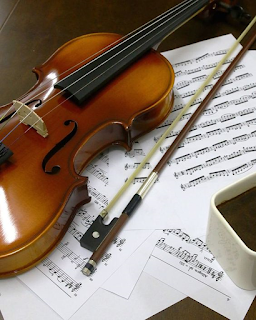The violas first emerged in Italy in the 16th century and were built in larger proportions than the violin. They bring a warmer sound and play in a lower range. Their mellow sounds balance the brighter tone of the violin. Primarily, the viola is an orchestral musical instrument, but can be also heard in folk, rock, jazz and pop music, and more. It doesn’t come in a standard size like the violin, but in different levels for players at different stages.
Rent or Buy?
Most beginners start their journey by renting the instrument, so they can gain experience without the financial commitment of the instrument. It allows the player access to high-quality instruments without having to buy any. However, at some point, buying begins to make more sense, especially if you’ve been playing the instrument for six months or more and want to keep playing it and learn more.
Tips on How to Choose the Right One
Investing in a high-quality string instrument is a significant decision that requires careful consideration. Choosing an instrument is one of the hardest decisions a musician has to make, so it’s important to make it right. If you’re a beginner, you can buy a viola that meets your needs and start your journey on the basics of playing, bowing, tone production and more. Here is what you need to look for to find the perfect one for you.
Budget
To begin with, determine your budget. You don’t have to buy an expensive instrument as the price is not necessarily an indicator of product quality, however, stay away from low-priced instruments as they’re likely to be unplayable. Look for an instrument that offers both sound production and playability and comes at a reasonable price for a beginner violist. Many options on the market come in the mid-price range and are great for the enthusiast who is just starting their musical experience.
Size
When you’re looking for a viola for sale, keep in mind that it’s not a one-size-fits-all. As mentioned above, it doesn’t come in a standard size, and sometimes, even among violas of the same size; there might be differences in their sound. It’s due to many different details, such as strings, wood materials, and more.
The size of the instrument used to have an impact on the sound; however, violas these days are designed to produce a rich, full tone regardless of size. That means you won’t have to suffer the weight of the instrument for the sake of sound as musicians in the past did. Its size refers to the length of the instrument’s body, not including the neck. If you’re getting your first viola online, consider your height and arm’s length when selecting your instrument.
Materials
Stick to well-known, trusted brands. Keep in mind that the quality of the material used impacts both sound and price. As a beginner violist, you can choose an instrument with scratch-resistant varnish and soft strings.
Reliability
Choose a trusted supplier, especially when buying online. Always check verified customer reviews and give their violas a detailed research before buying, so you’ll know exactly what you’re looking for. Many of them offer instrument testing in-store, so you can visit them if you want to test the instrument before buying.
What Else Do You Need?
Here is a list of accessories you can buy in addition to your instrument.
Case
Having a good case can be very helpful for any violist, no matter a beginner or professional. Choose a lightweight case featuring a lock and pouches, so you can store and keep your instrument and sheet music safe.
Shoulder Rest
Getting a shoulder rest is optional, but if you feel like you could use a layer of support between you and the instrument, then choose a comfy and adjustable shoulder rest.
Rosin
A solid resin is attached to your instrument and is used to create friction with each string. You can buy one and get more into your violist experience.
Bow
Picking the right bow can make a big difference in your playing experience. You don’t have to exceed your budget as there are many high-quality bows on the market at reasonable prices.
Extra Strings
Always keep an extra pair of strings in your case. Viola strings are not as likely to break or fray as violin strings, but it’s better to stay on the safe side.
Music Stand
A sturdy and adjustable music stand can be helpful for any player, whether a novice or an experienced one. It’s important to develop and reinforce proper playing posture and technique. If set at the right height, it can help to improve breathing and prevent backaches, often caused by poor posture.
Final Thoughts
In the end, it all comes down to getting an instrument that you like. Talk to your teacher or a trusted string instrument supplier before making a purchase and use their advice when making a final decision. Buy from a trusted supplier that offers warranty and friendly customer service, so you’ll know you can contact them should any question or concern arise.
And remember that comfort matters in your playing experience, some even say that it’s more important than size because if the violist struggles, it will show through sound quality.






No comments:
Post a Comment